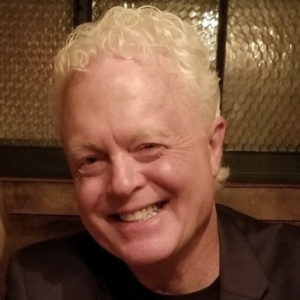Do Nursing Home Alliances Work?
| Some long-term care experts contend that the era of nursing home alliance is passing. With managed care stuggling, and with facility esxecutives unwilling to share substantial assets or information, so the argument goes, nursing homes need to seek other sources of support and survival. And yet at least four such alliances founded within the last few years appear to be discrediting this argument. Does this mean there is still hope for the alliance model? if so, what does it offer nursing homes, now in their hour of greatest need? Top executives at the for alliances recently shared their reflections on these questions with Nursing Homes/Long Term Care Management. |
| "The Aurum Network was formed by a group of forward-thinking owners of independent skilled nursing and assisted living facilities as a response to a difficult and extremely competitive environment. These owners felt that there were strength and expertise in numbers, particularly in negotiating contracts, group purchasing, developing best practices and establishing a platform where their voices could be heard. "Much has changed in the past two years. Yet, while large chains and managed care organizations have had their difficulties and reimbursement issues have become critical, our membership has grown. We have managed to survive and flourish even during these difficult times. "The key has been our ability to respond to the changing marketplace as a network, while allowing the members to retain their independence and local autonomy. As a network, we have been able to find economies of scale in purchasing, health insurance, worker's compensation, pharmacy and other areas. "We understood that it was absolutely necessary to upgrade our management information systems (MIS), a very expensive and time-consuming process. We are able, as a network, to evaluate how we might be able to have a high level of sophistication at a reasonable cost. "In other areas we share our expertise. We have a number of subcommittees sharing information and data that help all members. One goal is to collect data to establish best practices. If a member is doing something well, he shares it with the other members-from improving staffing patterns and benefits packages to streamlining the admission and referral processes. "We also share a commitment to providing the highest standard of care. But we are not content merely to say that. We want to prove it. Recently, all our facilities took part in a resident satisfaction survey. The survey was developed for the Healthcare Association of Michigan to survey resident satisfaction in Michigan nursing homes. We were given permission to use it, and our results were quite impressive. We received a 92% overall satisfaction rating from our residents and their families. |
| Leta Beam, President, KAIROS Health Systems: "Over the past four years we've become a functionally integrated health-care system for subacute services, post-acute services and retirement community living. We now have 70 nonprofit subacute and skilled nursing centers located in Pennsylvania, Maryland, Delaware and New Jersey. All of our members own shares of stock in KAIROS , which is privately held. Collectively, our stockholders employ more than 17,000 employees, and their combined operating budgets total more than three-quarters of a billion dollars. On any given day our campuses serve more than 22,000 individuals. "We do, as a collective, all of our managed care contracting, our continuous quality improvement (CQI) program and group purchasing initiatives. Last year, we also established a virtual consulting and training company called ExpertLinks, which brings top-notch training and consulting services to our stockholders in a timely and appropriate fashion. "Last year we formed a strategic partnership with Aegis Healthcare Business Solutions, a subsidiary of the Mid-Atlantic Non-Profit Health and Housing Association (MANPHA). Any new partners that we will bring on from the Maryland marketplace will come from the Aegis membership; if we need additional service sites, that is the pool from which we will tap. They will be offered our group purchasing initiatives and can use ExpertLinks. "One benefit of an alliance is an immediate acceptance by the managed care marketplace. We now have relationships with 37 MCOs throughout the Mid-Atlantic region. We're developing and nurturing those managed care relationships, and our stockholders can take advantage of them when they join the system. Of late there has been considerable consolidation of managed Medicare and managed Medicaid organizations, and KAIROS has been particularly attentive to its relationships with them. "KAIROS' motto is 'together when it counts.' All of our stockholders maintain their independence, traditions, roots in their community and religious or fraternal constituencies. They are all completely independent, but they all believe that there's value in working together as a collective on some aspects of the business. In those circumstances, we act as a functionally integrated system. But again, there are no merged assets, and we don't manage or own any facilities-rather, our stockholders own KAIROS. "We take time out regularly for strategic reflection. The truth of the matter is that during these past four years, the healthcare landscape for nonprofit providers of subacute care and retirement community living has changed dramatically. Tremendous pressures have come down on our folks from state and federal programs and increased regulatory scrutiny. We need to pause and ask ourselves if we are remaining particularly relevant and meaningful to our stockholders as they go through these trying times. This process might well unearth for us new directions in which to proceed." |
| Mary Ann Kehoe, RN, NHA, Executive Director, Good Shepherd Services, Ltd. "Six years ago, Good Shepherd and Evergreen Retirement Community cofounded the Wellspring ProgramÖ and, together with 11 other charter Wellspring members, we have greatly benefited from the program. We recognized that the world around us was changing in many ways. Managed care would become a reality, there would be a continuing shortage of reimbursement, and human resources availability wasn't going to get any better. We asked, 'How could we survive and continue to provide quality in spite of these market conditions? "Early on in our discussions we determined that each of us would rather close our doors than compromise on resident quality. We felt strongly that the key to success was involvement of the line staff. "In Wellspring, therefore, each facility forms Care Resource Teams of line staff around seven clinical modules: physical assessment, elimination/continence, skin care, dementia management, falls, restorative care and nutrition. For two days, teams from all the facilities go to an off-site training center, where they are immersed in best practices taught by clinical experts. Adult learning/teaching principles, infection control, documentation, communication and resident rights are woven throughout the module training sessions, as well. The Care Resource Teams are interdisciplinary, with team composition dependent upon the module topic. All facility departments participate in Wellspring modules in one form or another. "One person, called the Coordinator, is a constant on all of the teams. That person is a registered nurse who acts as the team coach for all of the facility teams. The RN Team Coordinator assures team coordination and communication. "The first Wellspring module is management training. During the module, managers are taught how to be coaches, mentors and enablers to their staffs. Wellspring teaches managers how to ensure that each employee shares the work, because in the future, functioning in the old autocratic structure just won't work. Wellspring is not a top-down program; it is a line-staff-initiated-and-driven program. "A keystone to the alliance is our contract with Geriatric Nurse Practitioner (GNP) Leslie Wooldridge. She is the glue holding the entire program together. She is available to all of the Care Resource Teams and is on call 24 hours a day. She visits every facility each quarter to make sure that people are recording the data accurately and are producing quality resident outcomes. "We've seen a dramatic improvement in operations since implementing Wellspring. All across Wellspring, the line staff are lightyears ahead in their commitment to quality. The interdisciplinary teams have broken down the traditional barriers and reduced the turf battles that exist so often in organizations. We are also able to quantify some of our outcomes into dollars and cents. For example, we had 23,000 fewer incontinent episodes at Good Shepherd in 1999 than we did in 1998, which translates as a saving in nurse aide time of 2-1/2 FTEs. "Each facility that is a part of Wellspring remains independent. There is no plan for any of us to merge or do anything other than collaborate and cooperate. Wellspring is not a business alliance. At our very first meeting, each one of the CEOs walked into that room believing beyond a doubt that he/she had the best nursing home in the state of Wisconsin. When you have 11 people feeling that way, something's got to give. We learned quickly that 'organizational ego' has to stay out in the hallway in order for us to be open and honest and to learn from each other. "Each facility's culture is different, but there are three requirements for facilities to participate in Wellspring. First, the staff have to be assigned to permanent groups of residents to create a family environment. Second, staff must be empowered to make changes. Third, each facility must buy a bladder scanner because of the efficiencies that piece of equipment provides in managing incontinence." (An article on this, "Bladder Studies for Continence Control," appeared in the June 2000 issue of Nursing Homes/Long Term Care Management, p. 60.) "The American Association of Homes and Services for the Aging (AAHSA) has just received a grant from The Commonwealth Fund to study Wellspring over the next year to determine how, and how well, it works and whether it can be replicated nationally." |
| John David Smith, CEO, Alliance Continuing Care Network "We were incorporated in April of 1996 by five farsighted CEOs who came together to establish contracts with MCOs and implement cost-saving initiatives; they wanted to work as a team in strengthening administration, management, clinical problem solving, professional development, recruitment, communication, education programs, and pediatric and eldercare advocacy programs. Although the CEOs saw each other to a limited degree as competitors, they saw a larger competitive environment out there, especially in the form of managed care, an excess of long-term care beds and organizations' development of new products. The CEOs thought there would be an opportunity to work together to address these external competitive threats, and then to identify opportunities where working together presented a greater chance for success than even the largest of them would have had on their own. "The ACCN grew on a very selective basis from the original five members. Currently, we're a 15-member organization, with 21 nonprofit facilities representing more than 7,300 beds and located in the New York City metropolitan area, including Brooklyn, Bronx, Queens and the counties of Nassau, Suffolk and Westchester. |
I Advance Senior Care is the industry-leading source for practical, in-depth, business-building, and resident care information for owners, executives, administrators, and directors of nursing at assisted living communities, skilled nursing facilities, post-acute facilities, and continuing care retirement communities. The I Advance Senior Care editorial team and industry experts provide market analysis, strategic direction, policy commentary, clinical best-practices, business management, and technology breakthroughs.
I Advance Senior Care is part of the Institute for the Advancement of Senior Care and published by Plain-English Health Care.
Related Articles
Topics: Articles , Leadership











